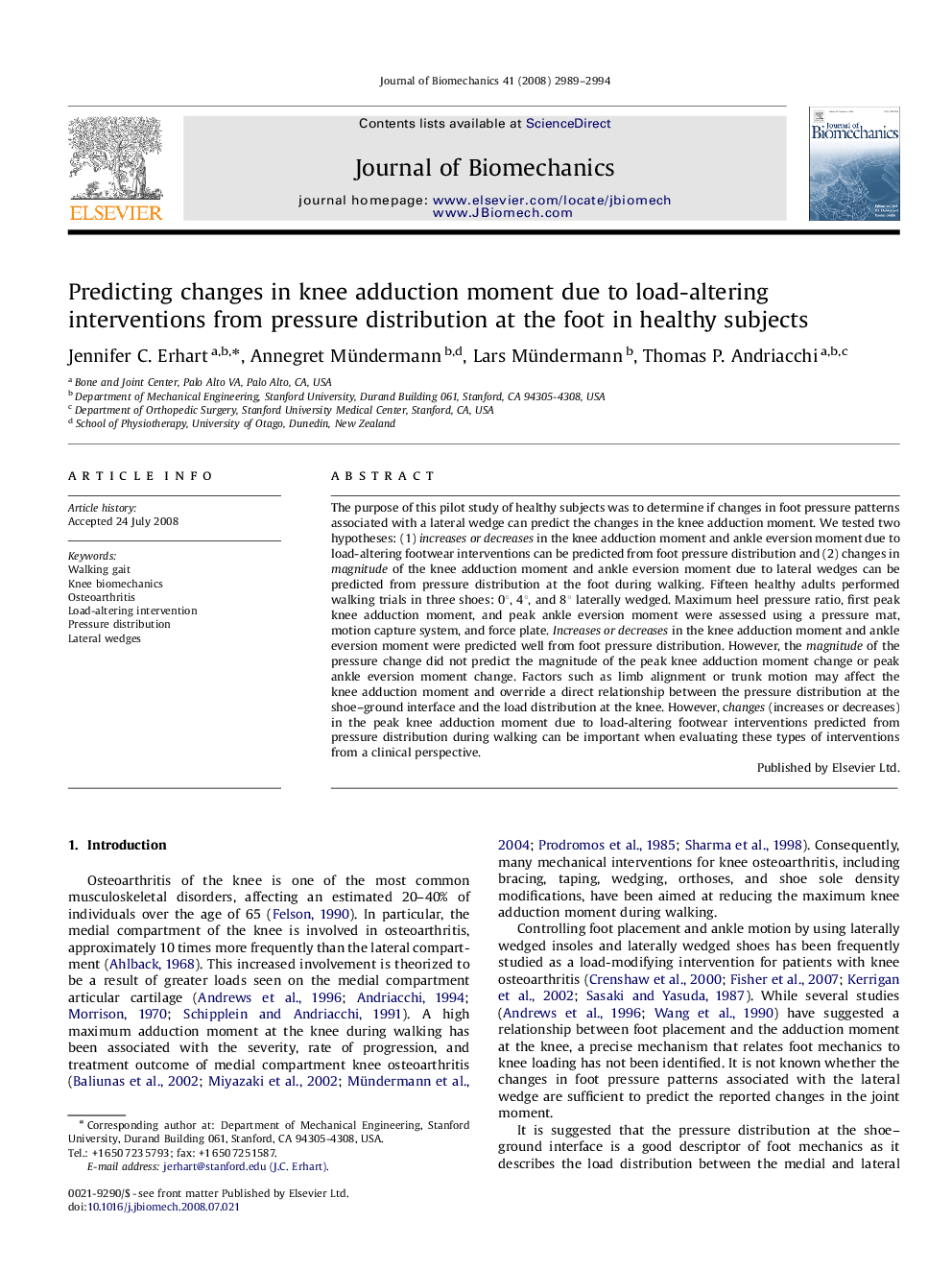| Article ID | Journal | Published Year | Pages | File Type |
|---|---|---|---|---|
| 873831 | Journal of Biomechanics | 2008 | 6 Pages |
The purpose of this pilot study of healthy subjects was to determine if changes in foot pressure patterns associated with a lateral wedge can predict the changes in the knee adduction moment. We tested two hypotheses: (1) increases or decreases in the knee adduction moment and ankle eversion moment due to load-altering footwear interventions can be predicted from foot pressure distribution and (2) changes in magnitude of the knee adduction moment and ankle eversion moment due to lateral wedges can be predicted from pressure distribution at the foot during walking. Fifteen healthy adults performed walking trials in three shoes: 0°, 4°, and 8° laterally wedged. Maximum heel pressure ratio, first peak knee adduction moment, and peak ankle eversion moment were assessed using a pressure mat, motion capture system, and force plate. Increases or decreases in the knee adduction moment and ankle eversion moment were predicted well from foot pressure distribution. However, the magnitude of the pressure change did not predict the magnitude of the peak knee adduction moment change or peak ankle eversion moment change. Factors such as limb alignment or trunk motion may affect the knee adduction moment and override a direct relationship between the pressure distribution at the shoe–ground interface and the load distribution at the knee. However, changes (increases or decreases) in the peak knee adduction moment due to load-altering footwear interventions predicted from pressure distribution during walking can be important when evaluating these types of interventions from a clinical perspective.
